In a small town in Paraguay, a showdown is brewing between traditional producers of yerba mate, a bitter herbal tea popular across South America, and miners of a shinier treasure: gold.
A rush for the precious metal is pitting mate growers and indigenous groups against the expanding operations of small-scale miners who, until recently, were their neighbors, not nemeses.
“They [the miners] have destroyed everything... The canals, springs, swamps,” said Vidal Britez, president of the Yerba Mate Producers’ Association of the town of Paso Yobai, about 210km east of capital Asuncion.
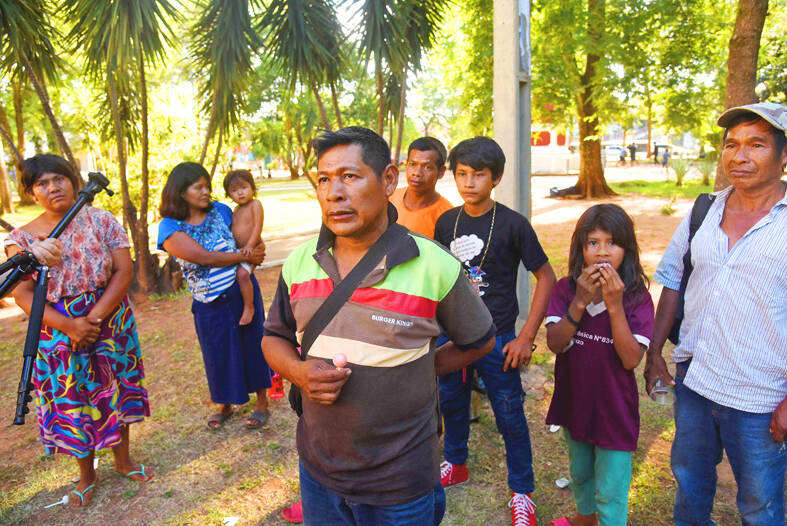
Photo: AFP
“You can see the pollution from the dead fish. The water has changed color,” the 56-year-old said.
Yerba mate, a green infusion sipped from a gourd with a metal straw, is deeply rooted in Paraguay, where the Guarani people have cultivated the tree that produces the leaves for centuries, including in Paso Yobai.
However, when an Ecuadoran miner discovered gold nuggets in a stream there in the 1990s, the town’s fortunes changed. One in six of its 30,000 inhabitants now lives off mining and related activities, with angry mate growers saying they are being squeezed out.
They also complain of environmental damage from the mercury used to extract gold and the arsenic released in the process.
The place “is the cradle of yerba mate,” Britez said indignantly, showing mate leaves covered in mining dust that he says are being spurned by buyers.
Tensions boiled over last month, with armed mate farmers and miners working for the Paraguayan subsidiary of a Canadian company nearly coming to blows.
No injuries were reported in the standoff.
However, since then, small groups of mate farmers have been camping out around Paso Yobai to prevent miners digging more quarries or pits.
In just a few years, Paso Yobai has been transformed from a quiet, bucolic settlement into a frenetic anthill of activity with lines of trucks hauling sand to pools where the gold is processed.
The farmers claim there are more than 300 excavations around the town — most of them illegal.
Each dig can yield about 1kg of gold in a month or two, and for some, the town’s long-hidden treasure has proved to be a boon.
Paso Yobai’s 2,000-odd small-scale miners earn about US$20 per day — roughly equal to the country’s minimum monthly wage.
“Many families managed to improve their homes, managed to get their children to study at universities,” miner Ruben Villalba said.
The mate farmers, by contrast, barely break even most of the time.
Last year, Paraguay exported 600kg of gold extracted mainly in Paso Yobai, generating US$260,000 in royalties for the Paraguayan government, Paraguayan Deputy Minister of Mines and Energy Mauricio Bejarano said.
Bejarano boasted that “profitability is guaranteed,” as Paraguay seeks to expand its fledgling gold-mining sector.
As for environmental concerns, he said that “as far as I know, there has been no complaint.”
The UN Environment Program has observed in a report that Paraguay has not conducted a national inventory of mercury pollution.
Two Paraguayan universities are researching the issue, but have yet to present their findings.
Ruben Irala Galeano, an agricultural engineer and researcher on the project, said initial findings have pointed to “alarming” mercury levels and to “an ecological crime being committed in Paso Yobai.”
His concerns are shared by Nery Cardozo Benitez — a Mbya Guarani leader — who said the community could see the effects of the mining for themselves.
“The chemicals they use are very potent. They evaporate into the air and contaminate our animals,” the chief said.
Mariano Benitez, a fellow indigenous leader from a nearby settlement, said the contamination was making it difficult to survive.
“The fish are dying. We don’t have drinking water,” he said.
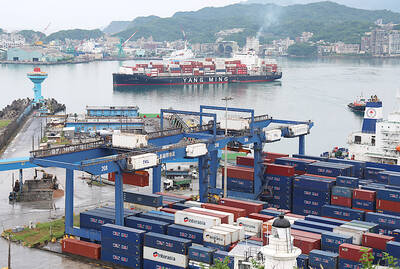
Taiwan’s exports soared 56 percent year-on-year to an all-time high of US$64.05 billion last month, propelled by surging global demand for artificial intelligence (AI), high-performance computing and cloud service infrastructure, the Ministry of Finance said yesterday. Department of Statistics Director-General Beatrice Tsai (蔡美娜) called the figure an unexpected upside surprise, citing a wave of technology orders from overseas customers alongside the usual year-end shopping season for technology products. Growth is likely to remain strong this month, she said, projecting a 40 percent to 45 percent expansion on an annual basis. The outperformance could prompt the Directorate-General of Budget, Accounting and
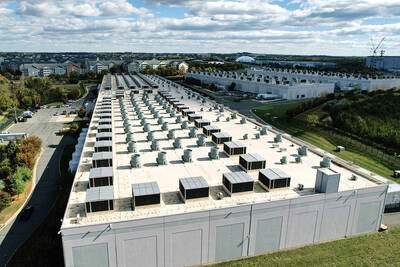
The demise of the coal industry left the US’ Appalachian region in tatters, with lost jobs, spoiled water and countless kilometers of abandoned underground mines. Now entrepreneurs are eyeing the rural region with ambitious visions to rebuild its economy by converting old mines into solar power systems and data centers that could help fuel the increasing power demands of the artificial intelligence (AI) boom. One such project is underway by a non-profit team calling itself Energy DELTA (Discovery, Education, Learning and Technology Accelerator) Lab, which is looking to develop energy sources on about 26,305 hectares of old coal land in
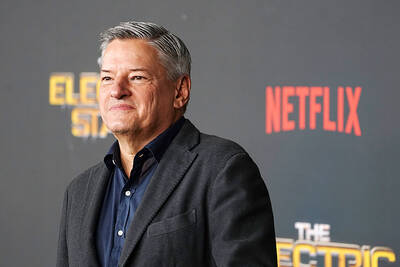
Netflix on Friday faced fierce criticism over its blockbuster deal to acquire Warner Bros Discovery. The streaming giant is already viewed as a pariah in some Hollywood circles, largely due to its reluctance to release content in theaters and its disruption of traditional industry practices. As Netflix emerged as the likely winning bidder for Warner Bros — the studio behind Casablanca, the Harry Potter movies and Friends — Hollywood’s elite launched an aggressive campaign against the acquisition. Titanic director James Cameron called the buyout a “disaster,” while a group of prominent producers are lobbying US Congress to oppose the deal,
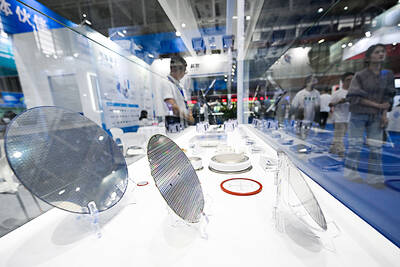
Two Chinese chipmakers are attracting strong retail investor demand, buoyed by industry peer Moore Threads Technology Co’s (摩爾線程) stellar debut. The retail portion of MetaX Integrated Circuits (Shanghai) Co’s (上海沐曦) upcoming initial public offering (IPO) was 2,986 times oversubscribed on Friday, according to a filing. Meanwhile, Beijing Onmicro Electronics Co (北京昂瑞微), which makes radio frequency chips, was 2,899 times oversubscribed on Friday, its filing showed. The bids coincided with Moore Threads’ trading debut, which surged 425 percent on Friday after raising 8 billion yuan (US$1.13 billion) on bets that the company could emerge as a viable local competitor to Nvidia